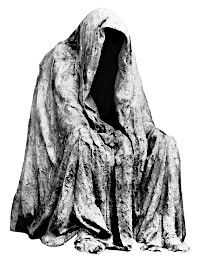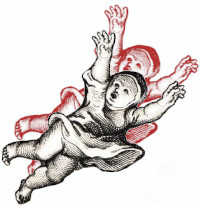Velikovsky is the source of Graham Hancock’s Collective amnesia theory. It is possible that Hancock was one of the young scholars of the 1960s who rejected much of establishment science based on the suppression of Velikovsky’s work and it’s eventually proof as correct—at least where the temperature of Venus and the composition of its atmosphere were concerned.
In this month of January I have listened to each two hour chapter five to ten times, taking some hand notes.
Worlds in Collision does not address the Younger Dryas Cataclysm of some 11,000 years ago. He seems mistaken in only one thing, the date of the instant killing and freezing of the Siberian mammoth herd.
This investigation concerns two time periods:
-Circa 1350 B.C. Exodus, the Battle of Zeus with Typhon, the chaining of Prometheus in the Caucasus, the battle of Thor and the Worldgird Serpent, etc.
-747 to 687 B.C. the time of Hezekiah, Numa and Homer
I have known for some time that excavation of Troy demonstrates five layers of destruction, that the place had been founded and re-founded numerous times and was struck down by calamity or raid. I have long thought that the traditional date for Homer’s Iliad set at Troy was at about 1200 B.C. That was perhaps a thread, and certainly related to the Sea Peoples. Velikovsky has convinced me that Homer’s depiction of Ares [Mars] storming walls with fire and interacting with Aphrodite [Moon] and being whipped by Athena [Venus] is referencing a third fall of Troy at about 747-687. Intervals of 15 years are used, which coincides roughly with the length of the siege and of the wandering of Odysseus. Also, a similar time period elapses between the various Assyrian attacks on Isrаel under Hezikiah and his father.
“In the year of the world 2453,” [1] is the date for the comet of Typhon, describing the portents of Egypt under Exodus. Many other ancient sources are cited for the portents of Exodus:
Chinese
Tibetan
Hindu
Siberian
Persian
Babylonion
Assyrian
Hebrew
Egyptian [Ipuwar, who agrees in all things with Exodus]
Greek
Roman
Celtic
Finish
Nordic
Choctaw
Aztec
Mayan
Inca
Pacific Northwest [there was an advanced town of Chinese style found in Alaska, abandoned]
Polynesian
Japanese
Micronesian
Indonesian
There are few disagreements with the world wide sources that a cataclysm struck the earth in the form of a Comet, called Typhon or something like it in many places, and is the root for our word Typhoon A similar name is found in languages around the world and must indicate the distinct sound of a world caught in the tail of a comet.
These events concern the flight of Venus, a planet that cannot be found in the solar system before 1400 B.C. It is unclear if Venus was ejected from Jupiter, was a moon that escaped Jupiter or Saturn, or was from outside the Solar System. The comet form of what became the planet Venus changed images as it passed, causing earthquakes, volcanoes, floods, tempests, fires [deposited manna] stones, petrol [as liquid and fire when the hydrocarbon tail of the comet hit the earth’s atmosphere]. When the body of the comet head, burning bright, was seen to have electrical exchanges with the tail, it was mytholigized as a god of light battling a serpent or dragon in many faiths. The Egyptians saw Horus battling Seth, for instance.
The sun was not seen for days.
Some 50 years later, in the time of Joshua, the sun and moon would stand still, which Velikovsky attributes to a less close passage of Venus disturbing the earth’s orbit.
The various worldwide visions of the comet in the sky, who came to rest as the Morning Star reflect the changing image based on the proximity:
-Crooked Serpent
-Dragon
-Feathered Serpent
-Witch riding a broom [both hemispheres]
-Sword
-Trumpet
-Bull [when horns appeared and manna or ambrosia fell the bovine image was made feminine, as a cow]
-Valkerie [a woman with flowing hair]
-Wolf [chasing with tail]
-Mouse
-Bow [such a prodigy was seen by New Englanders in 1675, and appeared as a shooting star to Virginians of the same year]
-Column
-Spear
-Monster
The great effect that Velikovsky claims is the deposit of petrol. The account of Ipuwar of Exodus is sorrowful in the extreme. All sources agree on a post cataclysmic gloom, a darkness, The Shadow of Death, and that this darkness was accompanied by trumpets from heaven, hail and coals of fire.
The Books of Jasher, Joshua, Ezra, Psalms and Job are included to support Exodus, as well as numerous quotes from rabbinical sources. Philo and Pseudo-Philo are particularly informative.
“The whole world breaks into flames,” say a Hindu source on the ending of the “Sixth Sun Age,” which corresponded with the end of the “sixth world age,” in other sources.
Velikovsky is at his best in his section on the Theophany, of the trumpeting of heaven. In Babylonia “the spheres of the stars were called voices and were expected to make music.”
“The wide earth rang,” of Homer is echoed in Gilgamesh and many other ancient inscriptions. The Battle between Gilgamesh and Enkidu against The Bull of Heaven, instigated by Ishtar [Venus] is not cited by the author, but comes to mind. [2]
Jove, Jaho and Jehovah are noted as similar in sound as influenced by the same global theophany.
The use of roughly 50 day mini ages, the Hebrew jubilee and the Aztec judgment of heaven, correspond with the space between Exodus and Joshua’s solar miracles in Canaan.
Part two of the book deals with modern scientists disbelieving ancient astronomical observations from the period. He proves that when all observations of the moon and sun and earth were “wrong” between 747 and 687 B.C. this was a period of correction. The belief that all the bodies of the solar system must forever tread the same peaceful course is not supported by any scientific law or theory and actually goes back to a promise from God reported by a man that there would be no more deadly rain. We require an Odinist observatory, I think.
Before Mars came near the earth and was placed back in a regular orbit, it seems to have been disturbed by Venus and careened towards Earth. Before this time, Mars was not the dreadful god it became, also known as Ares and Nergal. Although there were some quakes, floods, tempests and fires associated with the near miss of Mars, it was a smaller body than Venus and had less disastrous concourse with the earth. This event seems to have placed Venus in a regular orbit, where she is 750 degrees hotter than she should be based on distance from the sun.
The Kings and Lawgivers of the time of Hezikiah, who had to reorder the calendar, and reorient the sunrise gate, had to make new sense of a shorter, then a longer year, shrouded in a hydrocarbon veil that was once her flowing hair.
Most of antiquity agreed that there were 12 months of 360 days, from which our universal coefficient of 360 degrees is derived.
Then, after a near passage of Mars in which electrical discharges between that planet and the moon were seen, the day reduced to 354 days, and by 687 B.C. was reestablished as being 364 days.
Obilisks, sun dials, sun gates and shadow clocks were all rendered obsolete around the world at the same time and then corrected by these many civilizations at the same time, over a couple generations, such as Numa in Rome correcting the calendar of Romulus.
The moon’s orbit was disturbed as well, with a period when there were 10 months. Many cultures on the primitive level refused to correct their ancient time keeping and simply have an unlucky month with no name. Indeed, the numbering of the Roman months, December being the tenth and now the 12th is a reflection of this. Time keeping was haphazard not because the ancient were served by mentally deficient and crazed astronomers, but because their best and brightest minds, such as the prophets of Isrаel and poets of Homer, were engaged with the heavens as having actual power over the occupants of the earth.
Velikovsky shows that the ancient knew that the two tiny moons of Mars [not visible with the eye in its present orbit] were known to the ancients because it had passed so close, naming them the hounds of that warring planet.
I have read no greater data-mine on ancient observations of Heaven and Earth then Worlds in Collision, and hope to listen to Ages in Upheavel.
…
Notes
-1. An author of Late Antiquity, possibly Pseudo Philo
-2. See the illustration of the Golden Bowl of Hansanlu in The Gods of Boxing.











